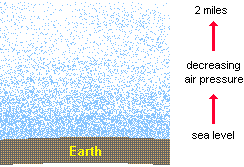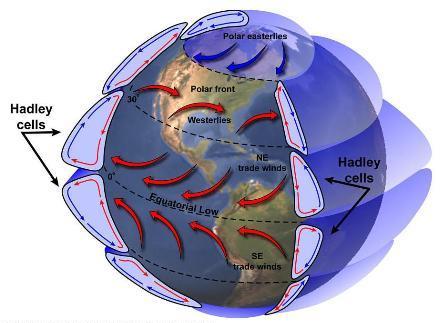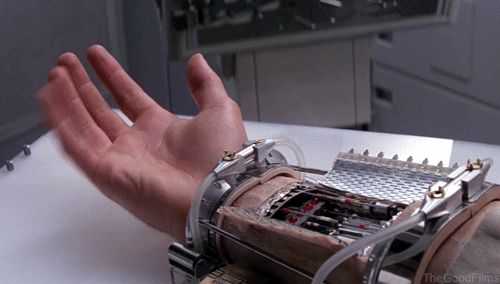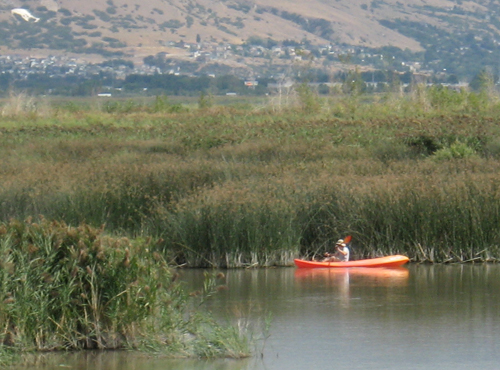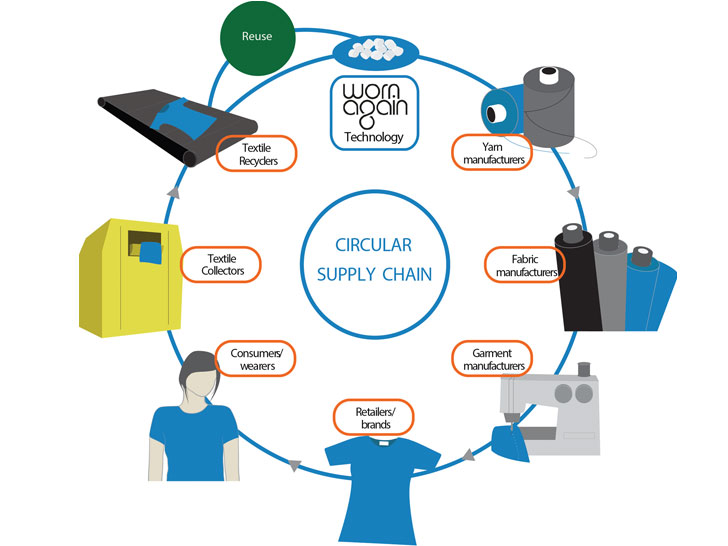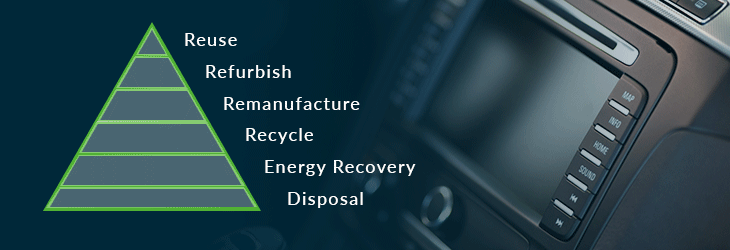In this day and age "unequal"="unfair". If people were all equal the world would be a better place, right?
Well....when we talk about weather, unequal might be better. Think about a world where all the weather was equal...
If the Earth had equal heating there would only be TWO atmospheric cells. At the equator the air would rise and below the equator the air would be pressed to the surface of the Earth because of gravity. This would cause high pressure. The only storms on Earth would be around the equator where the warm air met the cooled air...
Our weather would be totally different than what we know now. Because the Earth spins on a tilted axis, the Sun heats the Earth unequally. This causes wind and ocean circulation to spread out the heat unevenly across the Earth. Which is a good thing. Unequal heating pushes air masses across the Earth in bands. This brings weather all the way to the poles.
Because of unequal heating we have polar regions, tropical regions, and temperate regions. We have deserts and rain forests. We have warm places and cold places. The diversity of our climate has allowed hundreds of thousands of plants, animals, microorganisms and bacteria to flourish on Earth.
Search This Blog
Friday, February 28, 2020
Thursday, February 27, 2020
Altitude Affects Temperature
If you want to climb Mt. Everest the first item you need to consider taking is oxygen...
It's a hassle to carry so many pounds of oxygen with you, but when you get really high on the mountain, even before you reach the top, your brain is oxygen starved because the air is so thin. So, where did the air go?
Professional hikers know that for every 1000 feet that you climb up, you lose about 3 1/2 degrees Fahrenheit. That's why carrying an extra sweater if you are climbing is very smart. The higher you go the colder the air becomes because the air is getting thinner and thinner...the molecules don't bump around creating heat...So where did the air go?
Okay! Okay! Air is matter and it has mass. If air is warmed it is less dense and tends to float upwards, but...air is also under the force of gravity. As the Earth spins in space, gravity is forcing air molecules toward the ground. Even though heat will cause air to rise, gravity pushes it down.
So air looks something like this in the atmosphere:
Or:
Since air has mass, pressure near the earth is greatest compared to the upper atmosphere where the pressure is not as great. At sea level air pressure pushes against the Earth at 14.7 pounds per square inch! That's why when you travel from sea level up to a high mountain your ears pop. Your eardrum is feeling that release of pressure and pops outward.
Some people need to wear earplugs or chew gum to help the eardrum pop. It can relieve some of the pain that comes with decreasing pressure in the ear, or increasing pressure in the ear when you travel off the mountain back to sea level.
The motion of the air molecules will change the pressure. If weather changes from sunny to breezy, those molecules are on the move and will cause short periods of low pressure or high pressure.
When air is heated and rises up, this causes a low pressure area. If a storm comes in and cooler air sinks to the ground this causes a high pressure area with rain, snow and all that weather stuff.
Watch this!
That's where the air goes! Are you surprised? Did you get the "air knocked out of you". Snicker, snicker...get it?
Wednesday, February 26, 2020
Atmospheric Circulation cells
Atmospheric! Circulation! Cells!
Simply stated: Winds and weather circulate around the Earth because of the rotation of the Earth and the energy from the Sun.
On the other hand there is a whole bunch of things happening to make wind and weather. The winds actually circulate in CELLS that wrap around the Earth. These are HUGE systems that create our weather in our part of the world.
Don't worry about the names of these atmospheric circulation cells, look at the way they circulate. It's so cool how at each latitude there is a different direction and it has to do with how the Sun heats that part of the Earth.
This is a major part to how weather circulates from the Equator to the poles. It's only part of the story, and there's still more...
Tuesday, February 25, 2020
Introduction to Weather
Did you know that the weather, the seasons, the tilt of the Earth, the angle of the Sun's rays are all related??
The first concept we want to clear up is the difference between climate and weather.
Climate is the AVERAGE temperatures of certain places on Earth over a long period of time. It could be 30 years, 100 years or 1000 years. Climate is the long term temperatures for a country or area, like the equator.
Weather happens daily.
When we get dressed in the morning we don't dress for climate...we dress for weather.
If we want to travel to Iceland for a couple of weeks, we need to know the type of climate so we can dress appropriately. Iceland in winter is always on average, cold, snowy and dark!
The Earth's climate has stayed the same for many thousands of years. The climate will never change over night. We can wake up tomorrow morning and Hawaii will still be warm and balmy. But we might wake up tomorrow and it may be snowing at your house, but not at your school.
In some places the weather changes a couple of times during the day...
Yes!! Learning about weather is going to be so great because we already know A LOT about these things!
The first concept we want to clear up is the difference between climate and weather.
Climate is the AVERAGE temperatures of certain places on Earth over a long period of time. It could be 30 years, 100 years or 1000 years. Climate is the long term temperatures for a country or area, like the equator.
Weather happens daily.
When we get dressed in the morning we don't dress for climate...we dress for weather.
If we want to travel to Iceland for a couple of weeks, we need to know the type of climate so we can dress appropriately. Iceland in winter is always on average, cold, snowy and dark!
The Earth's climate has stayed the same for many thousands of years. The climate will never change over night. We can wake up tomorrow morning and Hawaii will still be warm and balmy. But we might wake up tomorrow and it may be snowing at your house, but not at your school.
In some places the weather changes a couple of times during the day...
If you want to see some crazy phenomena...weather is the best!!
Monday, February 24, 2020
Who Cares About Learning How to Solve Problems Like a Scientist or Engineer?
In 2018 2.4 million STEM jobs were left vacant because there weren't enough people who had the skills to solve problems like a scientist or engineer. In 2016 STEM jobs were growing 17% faster than other tech jobs. There is a real demand for people who can think, read, write and solve world problems.
What's the big deal? That's money that could have been earned! That's money that's just waiting to be spent on projects that can change the lives of millions of people in the world! The average wage for a STEM scientist or engineer is $38.85. (The median wage in the U.S. is $19.00.)
Learning to solve problems as an engineer or scientist is driving our economy to stretch and grow. The United States is not close to being competitive in the world economy. Out of 71 countries we are at #38 in math and in science #24. We have so much to give. Kids today need to be curious and try to think they can be a part of the solution to world problems. It's so possible for young people today to be astronauts, biochemists, engineers, bridge builders, architects, and create different ways to use solar energy, hydrogen powered cars or cleaner energy.
Albert Einstein was a thinker and a hard worker. He didn't run away from hard things. He thought about them until they made sense to him. He didn't quit. You might think he was the smartest man in the world. But that's not the case. He had a normal brain, just like you and me. He knew how to work at problems until he could see them through. He learned as he worked and he worked to learn. That's what a STEM career holds for kids.
What's the big deal? That's money that could have been earned! That's money that's just waiting to be spent on projects that can change the lives of millions of people in the world! The average wage for a STEM scientist or engineer is $38.85. (The median wage in the U.S. is $19.00.)
Learning to solve problems as an engineer or scientist is driving our economy to stretch and grow. The United States is not close to being competitive in the world economy. Out of 71 countries we are at #38 in math and in science #24. We have so much to give. Kids today need to be curious and try to think they can be a part of the solution to world problems. It's so possible for young people today to be astronauts, biochemists, engineers, bridge builders, architects, and create different ways to use solar energy, hydrogen powered cars or cleaner energy.
Albert Einstein was a thinker and a hard worker. He didn't run away from hard things. He thought about them until they made sense to him. He didn't quit. You might think he was the smartest man in the world. But that's not the case. He had a normal brain, just like you and me. He knew how to work at problems until he could see them through. He learned as he worked and he worked to learn. That's what a STEM career holds for kids.
Don't give up at school. Use your time to learn, solve problems and become aware of what you really like. Sign up for robotics classes, ocean classes, visit museums and learn how the natural world works by hiking and sitting still to see what is important to the Earth and to you!
That's why your teachers care about your progress at school. They hope each day you will keep at it, even though you want to quit and just hang out with your friends for the day. Everyday counts in Math, Science, Language Arts, Music and Art. Everything counts!
STEM links: https://www.engineeringforkids.com/about/news/2016/february/why-is-stem-education-so-important-/
Friday, February 21, 2020
Scientist VS Engineer
What is the big difference between a scientist and an engineer?
Scientists observe the world...they like to look at phenomena in and around the world and spacey things too. A scientist will stare at something and try to figure it out. If he's tired of just looking then he starts testing and we get lots of information about gravity, or environments, or atoms and molecules.
An engineer is the creator. They like to solve problems and create solutions. They are the builders. Do engineers need scientists? Or, do scientists need engineers? The answer is "YES". If one person is good at science and another is good at creating? Wallah! We get a world of technology.
Scientists want to know something and engineers want to do something. A scientist may want to know the origin of our universe, the engineer will build a huge machine that can blast atoms to pieces to discover the tiny parts of an atom.
Engineers and scientists are working together to do a large scale restoration project of the lower two miles of the Provo River that goes into Utah Lake. They want to make this part of the river like it was in the past, rich with the endangered June sucker. The increased habitat would be a nursery-like environment for many endangered species. Scientists have made the observations and know what needs to happen to restore this wetland area. Engineers are working with the scientists because there are problems...agriculture in the area would be lessened, homes would need to be taken out, and recreation would need to be moved. All considered the engineers are creating a way for the river to join Utah Lake, agriculture needs would be met, houses would be saved and recreation in the area could increase! This is a huge undertaking and it takes lots of scientists and engineers working together to make it happen.
Knowledge of engineering and science can make our lives more enjoyable. Technology can help us spend more time with our families and doing those things we like to do best, more often.
Scientists observe the world...they like to look at phenomena in and around the world and spacey things too. A scientist will stare at something and try to figure it out. If he's tired of just looking then he starts testing and we get lots of information about gravity, or environments, or atoms and molecules.
An engineer is the creator. They like to solve problems and create solutions. They are the builders. Do engineers need scientists? Or, do scientists need engineers? The answer is "YES". If one person is good at science and another is good at creating? Wallah! We get a world of technology.
Scientists want to know something and engineers want to do something. A scientist may want to know the origin of our universe, the engineer will build a huge machine that can blast atoms to pieces to discover the tiny parts of an atom.
Engineers and scientists are working together to do a large scale restoration project of the lower two miles of the Provo River that goes into Utah Lake. They want to make this part of the river like it was in the past, rich with the endangered June sucker. The increased habitat would be a nursery-like environment for many endangered species. Scientists have made the observations and know what needs to happen to restore this wetland area. Engineers are working with the scientists because there are problems...agriculture in the area would be lessened, homes would need to be taken out, and recreation would need to be moved. All considered the engineers are creating a way for the river to join Utah Lake, agriculture needs would be met, houses would be saved and recreation in the area could increase! This is a huge undertaking and it takes lots of scientists and engineers working together to make it happen.
Knowledge of engineering and science can make our lives more enjoyable. Technology can help us spend more time with our families and doing those things we like to do best, more often.
Thursday, February 20, 2020
Resources: Reusable, Recyclable, Landfill
When you buy paper plates, plastic forks, or plastic cups do you ever think about reusing, recycling or throwing away these materials?
Some people call our generations: "the throw away" generation because we consume so many materials that we don't think about where these materials go when we throw them away. What do we throw away? Phones! Computers! Batteries! Cars! Shoes! Clothes! Everything we don't want we either throw away or sell to someone else.
In some countries they use waterways to dump their garbage. Eventually it will get to the ocean? In the United States we use "landfills".
Workers push the garbage into a big mountain, or bury it under older garbage and let nature break down the materials. What we throw away matters. Paper products will degrade quickly, cloth will decay pretty quick...but plastics and metals? Not so much, it takes years for those materials to break down into smaller pieces.
We have machines that help us "shred" larger metals and materials:
The pieces are smaller, but the metal stays metal and the rubber doesn't change to another material, it stays rubber. These smaller pieces are taken to the landfill. How many landfills can we fill up?
When products are made or engineered these three environmental issues should be uppermost in our minds...can we reuse the material? Can we recycle the material, or will it end up in a landfill?
In our quest to reach the heights of technology, earn as much money as we can and enjoy as much of life that it has to offer, we should always be aware that living on the Earth is a privilege and we shouldn't take for granted the purity of our world.
We've heard about not using plastic straws, but the whole point is, can we reuse it? Or recycle it? If we can find plates that we can use and reuse, they are much better than plates we have to throw away. Recycling requires more responsibility and a higher work ethic. We need to wear our clothes until they wear out! If they don't fit, or have holes? Recycle them. Make a new shirt, a new dress, a new quilt using those clothes that are hidden in your closet.
Recycle your phone. Recycle your T.V.'s.
It might be a sacrifice for some to reuse and recycle, but so very worth it in the long run.
Some people call our generations: "the throw away" generation because we consume so many materials that we don't think about where these materials go when we throw them away. What do we throw away? Phones! Computers! Batteries! Cars! Shoes! Clothes! Everything we don't want we either throw away or sell to someone else.
In some countries they use waterways to dump their garbage. Eventually it will get to the ocean? In the United States we use "landfills".
Workers push the garbage into a big mountain, or bury it under older garbage and let nature break down the materials. What we throw away matters. Paper products will degrade quickly, cloth will decay pretty quick...but plastics and metals? Not so much, it takes years for those materials to break down into smaller pieces.
We have machines that help us "shred" larger metals and materials:
The pieces are smaller, but the metal stays metal and the rubber doesn't change to another material, it stays rubber. These smaller pieces are taken to the landfill. How many landfills can we fill up?
When products are made or engineered these three environmental issues should be uppermost in our minds...can we reuse the material? Can we recycle the material, or will it end up in a landfill?
In our quest to reach the heights of technology, earn as much money as we can and enjoy as much of life that it has to offer, we should always be aware that living on the Earth is a privilege and we shouldn't take for granted the purity of our world.
We've heard about not using plastic straws, but the whole point is, can we reuse it? Or recycle it? If we can find plates that we can use and reuse, they are much better than plates we have to throw away. Recycling requires more responsibility and a higher work ethic. We need to wear our clothes until they wear out! If they don't fit, or have holes? Recycle them. Make a new shirt, a new dress, a new quilt using those clothes that are hidden in your closet.
Recycle your phone. Recycle your T.V.'s.
It might be a sacrifice for some to reuse and recycle, but so very worth it in the long run.
Wednesday, February 19, 2020
Constraints and Criteria in Engineering Design
Constraints in designing a product or in a project is exactly how it sounds. Restraints.
Constraints are limitations to materials, money, equipment, and time. The constraints are like conditions that have to be met by your design. If you are designing a huge skyscraper, of course you want to use the best materials, but maybe those materials are too expensive, so you buy the same materials from a different country to save costs, but then your time runs out because the country couldn't ship the materials you needed by the time you needed.
A criterion or "criteria" needed for your design refers to the standard or the part of the project that can be measured. For example the height of your skyscraper. The dimensions of a parking structure.
Constraints and criteria actually help you figure out what kind of design you need. Knowing these parts of the project helps engineers design space and forces them to create different designs if the criteria and constraints aren't met.
The 2 C's of Engineering...and we aren't talking vitamin C!
Constraints are limitations to materials, money, equipment, and time. The constraints are like conditions that have to be met by your design. If you are designing a huge skyscraper, of course you want to use the best materials, but maybe those materials are too expensive, so you buy the same materials from a different country to save costs, but then your time runs out because the country couldn't ship the materials you needed by the time you needed.
A criterion or "criteria" needed for your design refers to the standard or the part of the project that can be measured. For example the height of your skyscraper. The dimensions of a parking structure.
Constraints and criteria actually help you figure out what kind of design you need. Knowing these parts of the project helps engineers design space and forces them to create different designs if the criteria and constraints aren't met.
The 2 C's of Engineering...and we aren't talking vitamin C!
Tuesday, February 18, 2020
Engineering Design is a Process
Engineering design is a process. If you are impatient like this sweet little girl in "Charlie and the Chocolate Factory", you probably aren't meant to be an engineer...
When you want to design something it takes a little time to research, test and process the information you learned from your research, tests and analyzing the results. Problems will be revealed, questions will be answered and the "idea" of your design will become clearer.
Sometimes problems can't be solved in one day, so it takes more research, modeling and testing. This could go on for a week, or months, even years. Engineers are persistent and patient.
Engineers are all about solving problems. They love problems so they can solve them...the design process gives them the time and motivation they need to solve problems. Remember the Hindenburg? The problem was, people wanted a way to get people from place A to B faster than taking a horse, car or carriage. Engineers designed the Hindenburg...but they didn't think of all the things that could go wrong...
Did this slow down engineers? Nope, they kept working on the problem. Another problem was the Quebec bridge in Canada. Engineers designed it to get people across and expanse of water. Instead of going around the water they wanted to build a bridge to go across the water....and upon use, it collapsed. Not just once either, it happened twice!
Everyone is still talking about this engineering problem: The Titanic. Engineers swore the large cruiser would never sink...well, we know the rest of the story.
...maybe?
Engineering design is all about trying to find the best solution to a problem. Some problems are really big and others are smaller and if solved could make you a millionaire! (Bobbie pins! Clothes pins, Mason jars! Even nylons!)
Engineers love problems!
Solving them is the icing on the cake.
When you want to design something it takes a little time to research, test and process the information you learned from your research, tests and analyzing the results. Problems will be revealed, questions will be answered and the "idea" of your design will become clearer.
Sometimes problems can't be solved in one day, so it takes more research, modeling and testing. This could go on for a week, or months, even years. Engineers are persistent and patient.
Engineers are all about solving problems. They love problems so they can solve them...the design process gives them the time and motivation they need to solve problems. Remember the Hindenburg? The problem was, people wanted a way to get people from place A to B faster than taking a horse, car or carriage. Engineers designed the Hindenburg...but they didn't think of all the things that could go wrong...
Did this slow down engineers? Nope, they kept working on the problem. Another problem was the Quebec bridge in Canada. Engineers designed it to get people across and expanse of water. Instead of going around the water they wanted to build a bridge to go across the water....and upon use, it collapsed. Not just once either, it happened twice!
Everyone is still talking about this engineering problem: The Titanic. Engineers swore the large cruiser would never sink...well, we know the rest of the story.
...maybe?
Engineering design is all about trying to find the best solution to a problem. Some problems are really big and others are smaller and if solved could make you a millionaire! (Bobbie pins! Clothes pins, Mason jars! Even nylons!)
Engineers love problems!
Solving them is the icing on the cake.
Subscribe to:
Posts (Atom)









